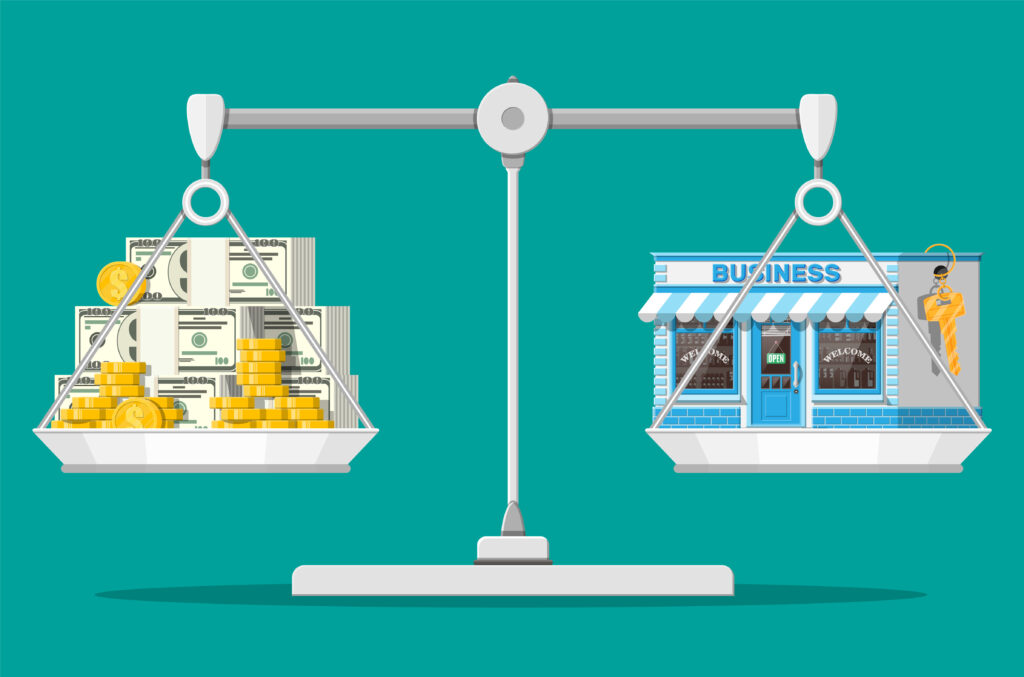
Why Did Instagram Sell for $1 Billion with No Profits?
In 2012, Facebook shocked the world by acquiring Instagram for $1 billion. At the time, Instagram had zero revenue and only 13 employees.
If traditional valuation methods rely on revenue, how did a company with no profits become a billion-dollar deal?
Because in tech, revenue and profit aren’t the only factors that determine value—growth, traction, and market potential play a huge role.
As a founder, you need to understand how valuation works—so you don’t undervalue your company or leave money on the table when negotiating with investors or acquirers.
A Founder’s Valuation Dilemma
Meet Sarah. She’s the founder of NextGen AI, an AI automation startup with growing traction.
She’s in talks with multiple investors, but every investor gives her a different valuation:
- Investor A: “Your company is worth $5 million based on your revenue.”
- Investor B: “We think you’re worth $15 million because of your user growth.”
- Investor C: “Your future potential puts you at $25 million.”
Sarah is confused. Which number is right?
The answer depends on the valuation method used. Let’s break it down so you can avoid the same confusion.
The 3 Valuation Methods Every Founder Should Know
1. Discounted Cash Flow (DCF) – The “Future-Proof” Method
What it is:
The Discounted Cash Flow (DCF) method values a business by estimating its future cash flows and adjusting them to today’s value. Investors use this to determine:
- How much cash your startup will generate over the next 5-10 years.
- How risky those future cash flows are (using a discount rate).
- Your expected growth rate (g): How fast will your revenue and cash flow grow each year?
- What your business could be worth beyond that period (terminal value).
Investors then add up the present value of all these future cash flows to get a valuation. If you’re raising capital, expect investors to run these calculations to see if your valuation makes sense.
Best for:
Startups with predictable revenue and strong cash flow potential.
Challenges:
Many startups don’t have stable cash flow yet, making DCF difficult to apply.
Example:
Think of DCF like buying a farm. You’re paying based on future harvests—not just today’s crops.
Action Tip for Founders:
If you’re using DCF, build realistic 5-10 year financial projections that reflect growth potential without overpromising.
2. Market Multiples – The “What Are Similar Startups Worth?” Method
What it is:
Market multiples compare your startup to similar companies that have recently sold or gone public.
Best for:
Getting a quick, market-based valuation.
Challenges:
Not all startups are the same, and market hype can inflate valuations.
Example:
Imagine pricing a house. If similar homes in your area sold for $500,000, yours is likely in the same range.
Action Tip for Founders:
Look at industry-specific multiples (e.g., SaaS startups are often valued at 5-10x revenue).
Where Founders Can Find Data:
- SEC Filings (10-Ks, 10-Qs) for public company data
- Crunchbase, CB Insights, PitchBook for startup valuations
- Investor Presentations from similar startups
3. Precedent Transactions – The “What Have Other Startups Sold For?” Method
What it is:
Precedent transactions look at past M&A deals to determine fair value.
Best for:
Startups in hot industries with frequent acquisitions.
Challenges:
Valuations fluctuate based on market trends and timing.
Example:
If Dropbox sold for 12x revenue, your cloud-based startup may be valued similarly.
Action Tip for Founders:
Research recent tech acquisitions to understand what buyers are willing to pay.
Where Founders Can Find Data:
- PitchBook, CB Insights, Mergermarket for M&A transactions
- TechCrunch, Bloomberg Tech for high-profile acquisitions
- Startup Newsletters & Investment Bank Reports
Case Study: How Sarah Used Valuation Methods to Land a $10M Deal
Sarah decides to combine all three methods to find a reasonable valuation:
- DCF Analysis: Forecasted cash flows suggest a $12M valuation.
- Market Multiples: Similar SaaS startups sell for 6x revenue, putting her at $8M.
- Precedent Transactions: A competitor was acquired for $10M.
Armed with this data, Sarah confidently negotiates a $10 million valuation, balancing future potential and market reality.
Common Valuation Mistakes Founders Make
1. Overestimating Growth Potential
Just because a company like Uber grew fast doesn’t mean every startup will.
Fix: Be realistic in revenue and customer projections.
2. Ignoring Market Trends
Valuations fluctuate based on economic cycles and investor sentiment.
Fix: Compare valuations during boom vs. downturn years.
3. Relying on Just One Method
Using only DCF or market multiples can skew the valuation.
Fix: Always use at least two valuation methods for accuracy.
4. Not Factoring in Dilution
Future funding rounds can reduce your ownership.
Fix: Understand how dilution impacts long-term valuation.
5. Comparing the Wrong Companies
A SaaS company shouldn’t be valued the same way as a hardware company.
Fix: Use industry-specific benchmarks for better accuracy.
Valuation Checklist for Founders
- Know Your Growth Metrics: Investors look at revenue, user acquisition, retention, and churn.
- Use Multiple Valuation Methods: Compare DCF, market multiples, and precedent transactions.
- Analyze Industry Trends: What are recent startup exits in your space?
- Be Realistic in Projections: Overpromising kills investor trust.
- Prepare for Negotiations: Investors will challenge your numbers—be ready with data.
Final Thoughts
Valuing your startup isn’t just about numbers—it’s about telling a compelling, data-backed story that shows why your business is valuable.
What’s the biggest challenge you face in valuing your startup? Share your thoughts in the comments!
Leave a Reply